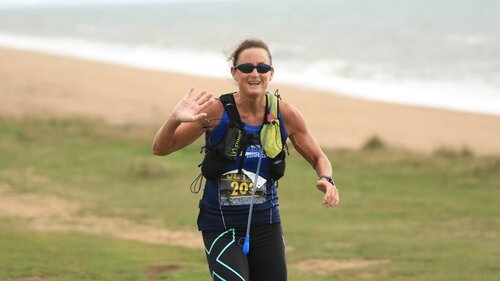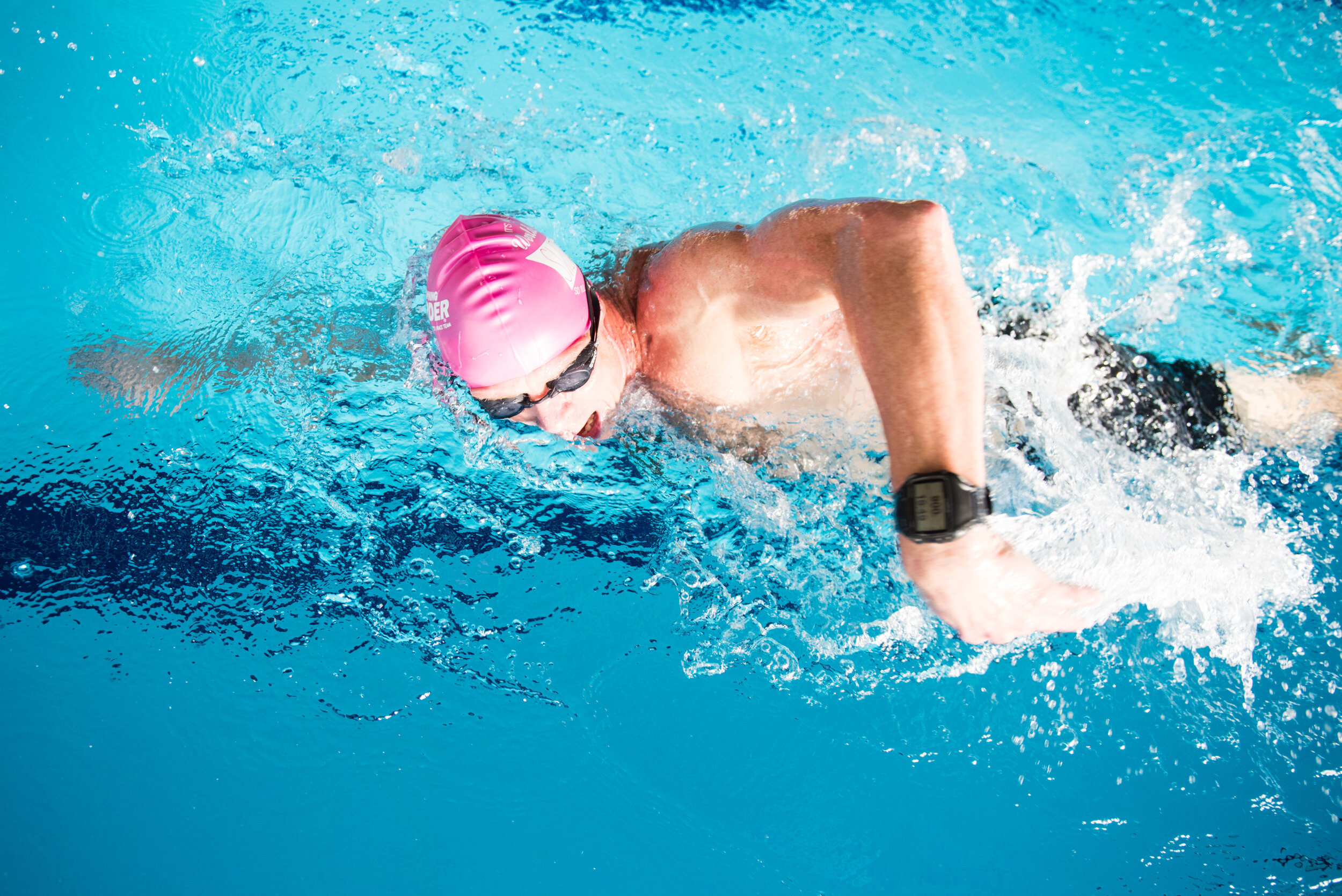Different times call for different approaches to keep you learning and improve your swimming.
Coach Tracy discusses the benefits of virtual land-based swim training, having already witnessed the success of the first TTH-swim-live program that has been implemented since January.
Even without the pandemic limitations, for many, swimming is still the hardest of the three disciplines to improve in. This is because swimming is the least frequented environment compared with running and cycling that are land-based and use movement patterns that we have learned and honed during our early years, so it comes naturally to us (autonomous phase of learning). Subsequently, swimming is often perceived as the hardest of the disciplines to train for and thus receives the least attention for improvement.
Not having regular access to pools or open water due to location, time or imposed 'lockdowns' worldwide certainly makes swimming harder than ever to progress in.
We see the light at the end of the tunnel for the latter, with a roadmap in place allowing access to swimming by the end of March and races commencing shortly after. This is very encouraging for us all, though it may stir some anxiety and fear within some of us, having not been able to swim for what seems like an eternity—the timeline does not allow much scope to prepare.
There is much excitement & chatter about what races people will sign up for, and the deep concern for most is about the swim. 2020-2021 has been an unprecedented year for everyone, so there is a great comfort to be had knowing that everyone will have experienced the same barriers and that swimming will have had the least amount of attention.
However, with the remaining weeks until the first races begin, what can you do to reduce your anxieties and prepare yourself physically and mentally for the 'new' season ahead?
(NB Free for coached athletes)
Program purpose
The purpose of these virtual sessions is for athletes to follow a coach-led session with individual feedback from the comfort of home with a specific focus on front crawl. Delivery of sessions is live to provide individual & group feedback essential for learning. It enables the learner to pinpoint the exact movement patterns required to develop positive muscle memory for future recall.
The sessions' content comes from reimagined or created exercises that mimic and replicate the key components that make up the front crawl stroke.
The program is designed to develop and build a deeper understanding of front crawl: about the 'what, why & how' of learning specific movement routines and exercises that develop muscular strength and endurance and, more importantly, build and imprint muscle memory and improve proprioception, both essential components allowing automatic recall of how to perform the correct technique without having to think about it.
Benefits
Practice any time of day to suit
Instant feedback
Reinforce positive muscle memory
Develop proprioception
Maintain strength and conditioning of the key muscles
Improve confidence
Transference of strength & conditioning to the other disciplines
Improve frequency/consistency of training, contributing to a better balance between the other disciplines
Dive a little deeper to find out how and why muscle memory and proprioception are essential to developing.
Once the brain starts to process and understand the 'what' & the 'why', self-awareness of the relative positioning of good swim mechanics starts to develop. Building positive muscle memory requires the body to learn (or re-learn) how to activate the right muscles, with the right movements, at the right time (neuromuscular activation), to position, hold or move body parts into place, whilst maintaining awareness of their relative position to the other moving and stationary parts (proprioception).
Neuromuscular activation focuses on fundamental functional movements that retrain the muscles, brain and joints to communicate with each other improving movement, strength, balance and function.
Proprioception plays an essential role in planning precise and coordinated movements, body awareness, and maintaining balance and controlling body posture. Proprioception is a continuous feedback loop between the sensory receptors found in your skin, muscles, joints and nervous system. During movement, the brain senses the effort, force, and weight of the actions and positions, responding accordingly. Essentially, the sensory receptors relay information to the brain when a body part moves, so it learns where a body part is relative to the rest of the body.
Both neuromuscular activation and proprioception are fundamental in the early stages of learning, as they pave the way to developing a solid base upon which to build.
Through repetition and focused performance of functional movements and exercises, the course will enable you to restore muscle memory and build and refine it, enhancing your stroke beyond its current level.
There is so much to be gained from improving swimming from home.
Other Benefits
The learning rate can be increased by removing the external variables that swimming presents. Learning occurs in a closed (fixed) environment. Techniques can be honed through the isolation and breakdown of techniques, repetition and practice, all whilst receiving constructive feedback, increasing improvement and refinement opportunities.
Having the opportunity to learn and understand more about stroke mechanics and train the muscles, tendons and joints to move in the right way, improving neuromuscular activation, proprioception and muscle memory will give your body the physiological and psychological adaptations. This allows you to be more ready than ever to negotiate and transfer all your skills to the pool environment or open water as and when time and conditions allow. When they do, you will know what to do to keep your skills sharp until you can get to the water.
Muscle memory and proprioception begin to degrade after 2-3 days. So, with that in mind
here is what Coach Tracy recommends that you can do from home to optimise the time you have when swimming:
Visualisation of key movement patterns can help to stimulate muscle memory if you are not able to swim
Practising front crawl movements patterns 5-10 minutes here and there throughout the week or on days you cannot swim will maintain muscle memory & proprioception and improve coordination and timing of your stroke.
Plan and perform a 5-minute land-based warm-up routine that mirrors the front crawl movement patterns aiming to mobilise and activate the key muscles needed to hold good form and complete the propulsive phases with efficient mechanics.
Attention to swimming distance is, of course, necessary. However, it is the swim-specific strength & conditioning element that will give your stroke stability, strength, and speed when transferred to the pool/sea environment. Until then, these sort of sessions will get you to the start line and beyond in great shape.

Tracy Cook is a qualified Coach and Sports & Soft Tissue Therapist who has joined TTH bringing with her a wealth of knowledge and experience of a range of sporting disciplines gained over many years as a Head of Sports in the education sector and, through advanced training programmes, as a successful competitive athlete at local, GB and World event levels.
Tracy was introduced to Triathlon in 2007 by a colleague who competed at elite-level in the 1980s when Triathlon was in its early days in the UK. Tracy’s enjoyment of, and success in, the sport led her to establish a school Triathlon club and to partner with a local club (Synergie Coaching) to help bridge the gap between school and local community sports.
Visit Tracy's
Coach profile
We’re here to help
Tri Training Harder are one of the leading Triathlon coaching providers in the UK, using our wealth of experience to unite scientific and technological research with already well-established and successful best practices, to create a formula for triathlon and endurance coaching that works.
The result is an honest, dynamic, yet simple new way of constructing an athlete’s training to allow them to reach their potential.
If you’re planning your next season, just starting out in the sport or are looking for extra guidance at the very top end of the field, we are here to help, and our coaches would be delighted to hear from you. You can contact us via the website, and one of the team will be in touch.

